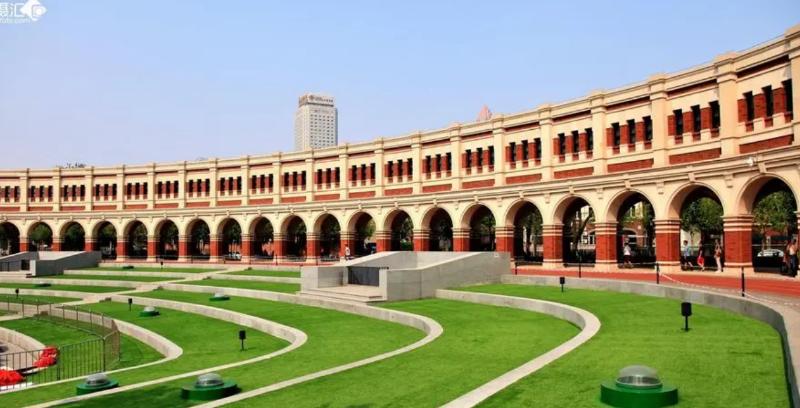The Wudadao Cultural Tourism Area
The Wudadao Cultural Tourism Area is a national 4A-level tourist attraction located in the Heping District of Tianjin. This area is bounded by Chengdu Road to the south, Machang Road to the north, Xikang Road to the east, and the intersection of Machang Road and Nanjing Road to the west. The Wudadao Cultural Tourism Area is not only a historically rich district but also boasts unique architectural styles and a wealth of cultural heritage. The following sections provide a detailed description of this area.

Reference: Tianjin Wudadao: A Cultural and Historical Tourism Area
Geographical Location and Layout
The Wudadao Cultural Tourism Area is situated in the heart of the Heping District in Tianjin, making it an accessible and prominent location. The area forms a rectangular shape, with its boundaries defined as Chengdu Road to the south, Machang Road to the north, Xikang Road to the east, and the intersection of Machang Road and Nanjing Road to the west. The total area of the district is approximately 1.28 square kilometers.
Historical Background
The history of the Wudadao area dates back to the late 19th and early 20th centuries. At that time, Tianjin was one of China's most important treaty ports, attracting a large number of foreign merchants and residents. This led to the establishment of several foreign concessions, with Wudadao developing within this historical context.
Architectural Styles
The Wudadao Cultural Tourism Area is renowned for its diverse architectural styles, earning the nickname "Exhibition of World Architecture." The buildings here represent a fusion of Eastern and Western architectural elements, including British, French, Italian, German, and Spanish styles. This blend reflects the international influences that shaped Tianjin during its development as a cosmopolitan city.
British Architecture
British-style buildings are primarily found along Machang Road and Munan Road. These structures often feature red brick exteriors, steeply pitched roofs, and tall vertical windows, embodying the charm of English country houses.
French Architecture
French-style buildings are concentrated on Dali Road and Chongqing Road. They are characterized by tall doors and windows, elaborate stone carvings, and ironwork railings. The facades are ornate and elegant, while the interiors emphasize symmetry and layers.
Italian Architecture
Italian-style buildings are also significant in Wudadao. These buildings often showcase arches, colonnades, and balconies, with vibrant colors and intricate details that exude a Mediterranean flair.
German Architecture
German-style buildings are prominent on Changde Road. These structures typically feature dark brick or stone, steep roofs, and rectangular windows. The style is straightforward and practical, emphasizing durability and utility.
Spanish Architecture
Spanish-style buildings can also be found in Wudadao. They often have white or light-colored walls, red-tiled roofs, and decorative ceramic tiles and ironwork, creating an exotic atmosphere.
Cultural Heritage
Wudadao is not just an exhibition of architectural styles; it is also a repository of cultural heritage. The area is home to numerous historical residences and landmarks, such as the former residences of Yuan Shikai and Liang Qichao. These buildings not only witness the historical changes in modern China but also record the lives of many historical figures.
Tourism Experience
The Wudadao Cultural Tourism Area has become an important tourist attraction in Tianjin. Visitors can stroll along the tree-lined avenues, admire the various architectural styles, visit historical residences, and learn about Tianjin's history and culture. Additionally, there are many cafes, restaurants, and museums offering a rich array of leisure and entertainment options.
Sightseeing Routes
To facilitate visitor exploration, Wudadao offers several sightseeing routes. Visitors can choose to walk or take a tour bus. With guided tours, visitors can gain deeper insights into the stories and historical backgrounds of each building.
Cultural Activities
Wudadao regularly hosts various cultural events such as architectural exhibitions, historical lectures, and concerts. These activities not only enrich the visitor experience but also help to preserve and promote the cultural heritage of Wudadao.
Conclusion
The Wudadao Cultural Tourism Area is a gem in Tianjin. It features unique architectural styles and rich historical culture, complemented by modern tourist facilities and diverse cultural activities. Both local residents and tourists can find their interests here, experiencing the unique charm of Tianjin. The Wudadao Cultural Tourism Area is not only a historical memory of Tianjin but also a testament to the exchange between Eastern and Western cultures and a hope for future development.
Q&A
What makes the Wudadao Cultural Tourism Area a significant tourist attraction?
Answer: The Wudadao Cultural Tourism Area is significant due to its diverse architectural styles, rich cultural heritage, and historical importance. It features buildings with British, French, Italian, German, and Spanish influences, making it a unique exhibition of world architecture. The area also houses numerous historical residences and landmarks, providing visitors with a deep understanding of Tianjin's history and cultural exchanges between the East and the West.
How can visitors enhance their experience when visiting the Wudadao Cultural Tourism Area?
Answer: Visitors can enhance their experience by taking guided tours that offer detailed insights into the historical and architectural significance of the buildings. Participating in the various cultural activities and events, such as exhibitions and lectures, can also provide a richer understanding of the area's heritage. Additionally, exploring the cafes, restaurants, and museums within Wudadao can add to the overall enjoyment and appreciation of the district.